Directions (1-5): In the following questions, two equations (I) and (II) are given. You have to solve both the equations and mark the appropriate answer.
Q1. I.(x-7)²=3x-23
II. y²-21y+108=0
(a) x<y
(b) x≤y
(c) x>y
(d) x≥y
(e) x=y or no relation.
Q2. I. x³=2744
II. (y-10)²=7y-80
(a) x<y
(b) x≤y
(c) x>y
(d) x≥y
(e) x=y or no relation.
Q3. I. (x+25)²=729
II. 3y²-20y+32=0
(a) x<y
(b) x≤y
(c) x>y
(d) x≥y
(e) x=y or no relation.
Q4. I. 3x²-26x+35=0
II. 8y²-26y+21=0
(a) x<y
(b) x≤y
(c) x>y
(d) x≥y
(e) x=y or no relation.
Q5. I. 3x²-17x+10=0
II. 16y²-14y+3=0
(a) x<y
(b) x≤y
(c) x>y
(d) x≥y
(e) x=y or no relation.
Direction (6-10): Study the given passage carefully & answer the questions.
In a sport Academy ‘XY’, there are some student who can play three games i.e. tennis, cricket & chess. Total number of players who play tennis is 160 & all three games are played by 10% of total tennis players. Ratio of cricket to chess players is 3:5 and total of cricket & chess players is 100% more than tennis players. Players who play both tennis and chess are 12 ½ % of total tennis players. Ratio of players who play both tennis & cricket to players who play both chess & cricket is 2:3 & total of players who play both tennis & cricket and players who play both chess & cricket is equal to one-fourth of chess players.
Q6. What is the average no. of players who play only one game?
(a) 139⅔
(b) 129⅓
(c) 135
(d) None of these
(e) 129⅔
Q7. Players who play chess but not cricket is approximately what percent of total players?
(a) 35%
(b) 45%
(c) None of these
(d) 40%
(e) 50%
Q8. What is ratio of players who play both tennis & chess to players who play only cricket?
(a) 7 : 13
(b) 9 : 41
(c) 10 : 43
(d) None of these
(e) 2 : 5
Q9. Players who play at least two games is approximately what percent of players who play utmost two games?
(a) 4%
(b) 6%
(c) 15%
(d)12%
(e)9%
Q10. What is the difference between no. of players who can play tennis & players who play only cricket?
(a) 74
(b) 64
(c) 68
(d) None of these
(e) 72
Direction (11-15) : The given below pie chart shows the percentage distribution of daily consumption of electricity (in units) of five different families in a building. Read the pie-chart carefully and answer the following questions.
Total units of electricity consumed in a day =14,000
Note-Total units of electricity available = Total units of electricity consumed + total units of unconsumed electricity
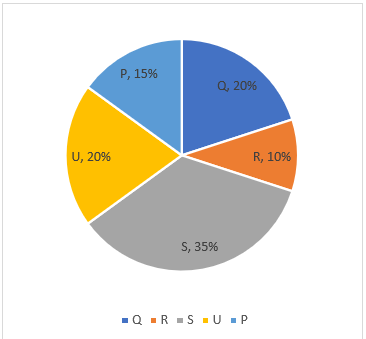
Q11. The average units of electricity consumed by families P and S together is what percent more/less than the average units of electricity consumed by families R and U together?
(a) 25%
(b) 66⅔
(c) 33⅓%
(d) 60%
(e) 75%
Q12. If 87.5% of the available units of electricity is consumed by all families, then find the ratio of units of unconsumed electricity to the difference of the units of electricity consumed by families S and Q together?
(a) 6 : 7
(b) 44 : 45
(c) 62 : 63
(d) 20 : 21
(e) 14 : 15
Q13. Find the ratio of the units of electricity consumed by family S and U together to the units of electricity consumed by families P and R together?
(a) 11 : 5
(b) 5 : 4
(c) 3 : 2
(d) 13 : 8
(e) 15 : 8
Q14. ![]() of units of electricity consumed by family S is what percent of units of electricity consumed by R.
of units of electricity consumed by family S is what percent of units of electricity consumed by R.
(a) 7 ½ %
(b) 8 ½ %
(c) 10%
(d) 12.5%
(e) 11%
Q15. The difference of the units of electricity consumed by families U and S together is how much more than the difference of units of electricity consumed by family Q and R together?
(a) 700 units
(b) 640 units
(c) 660 units
(d) 720 units
(e) 680 units
Solutions
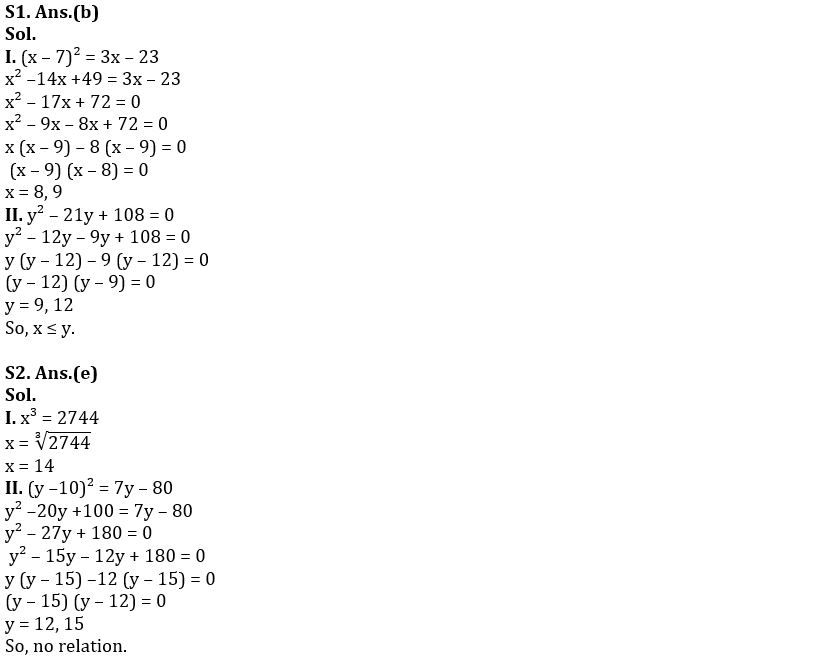
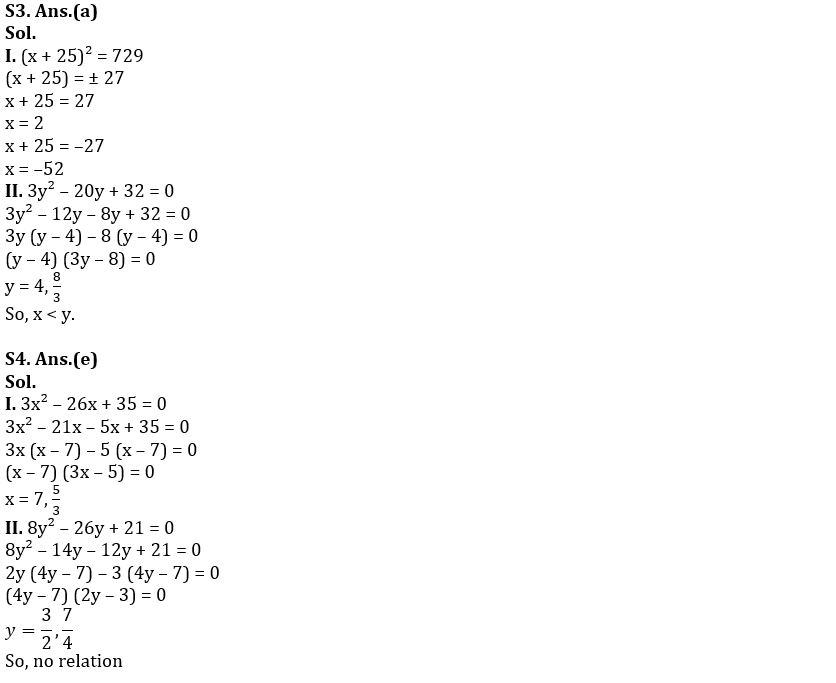
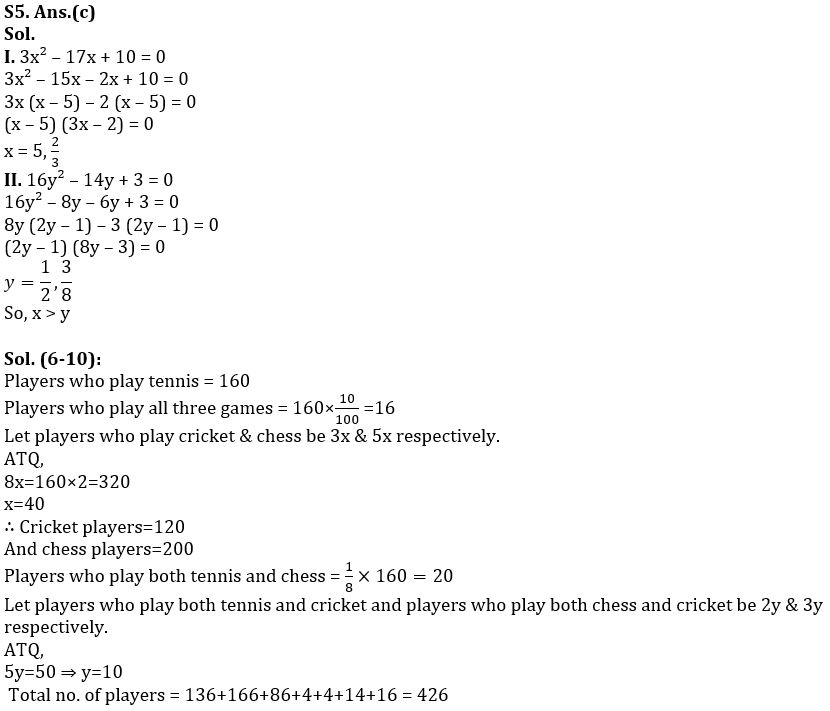
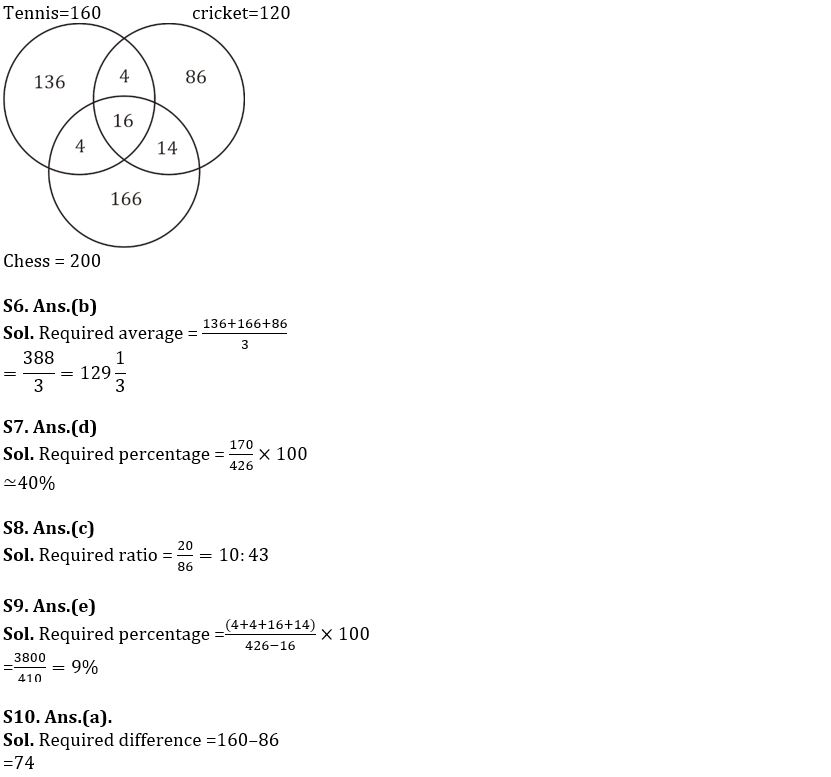
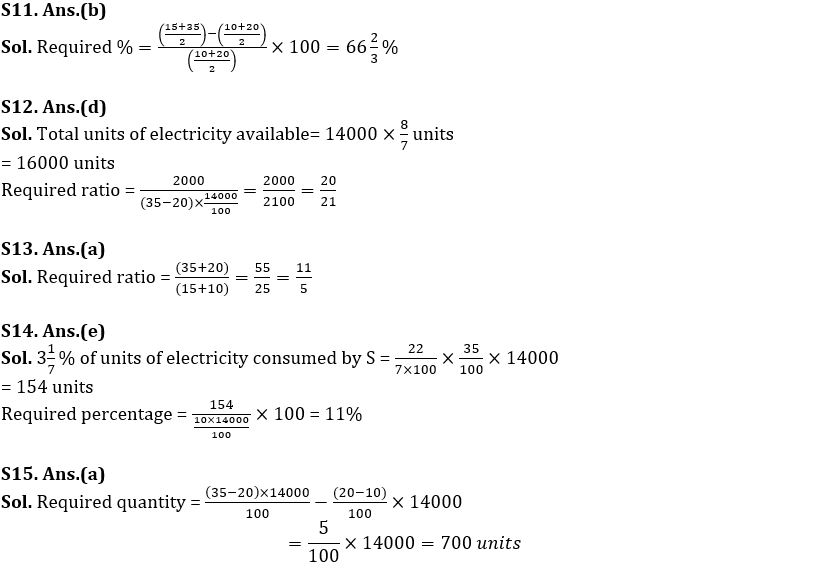





 Quantitative Aptitude Quiz For Bank Main...
Quantitative Aptitude Quiz For Bank Main...
 Quantitative Aptitude Quiz For Bank Foun...
Quantitative Aptitude Quiz For Bank Foun...




